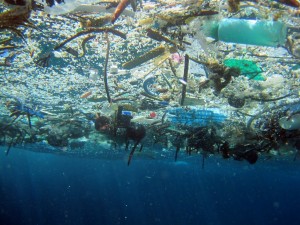A detailed study about the amount of rubbish littering the Atlantic and Mediterranean sea-floor has revealed that the situation is much worse than expected.
A large-scale scientific study of Europe’s sea floor has found that the advance of marine-based plastic waste is much more wide-spread than initially feared. From the Costa Brava to the Charlie Gibbs Fracture Zone, a new study has revealed the European sea-bed to be one of the world’s largest dumping grounds, posing a dire threat to some of Planet Earth’s most mysterious life-forms.
After analysing almost 600 video, image and trawl transects, an international research team comprising of members of University of the Azores (Portugal), the University of Plymouth (GB) and Germany’s Alfred Wegener Institute were able to establish that rubbish could be found on each of the thirty two separate sea-bed locations – even those that have not yet been explored by humans.
Co-author Kerry Howell – Associate Professor in Marine Ecology at the University of Plymouth – expressed shock at the findings: “Human litter is present in all marine habitats, from beaches to the most remote and deepest parts of the oceans. These are our first visits to many of these deep-sea sites – we were shocked to find that our rubbish has got there before us.”
It is estimated that 6.4 million tonnes of rubbish makes its way into the sea on an annual basis, with reports from the United Nations suggesting that an incredible 142 million tonnes of plastic waste are already lingering on the ocean’s surface. And as if that alarming statistic wasn’t bad enough, scientists are already warning that the dumping of this trash is only the beginning of the problem.
The findings, published in the academic journal PLoS On, revealed that further a large collection of unidentifiable objects made out of glass, wood and paper, almost a third of the marine debris was made up of fishing waste (such as fishing lines, nets etc.) with a further 41 per cent – more worryingly – made up of plastic.
As well as posing a haven for invasive species and physical threat to sea life – marine mammals, tortoises and birds are at particular risk of either getting caught up in or ingesting the rubbish – plastic waste also has the double threat of releasing tiny toxins, which could ultimately wreak havoc on the entire ocean food chain, from bottom feeders, to apex predators and beyond on to humans.
Often taking hundreds of years to break down, notoriously resistant plastic materials are known to release poisonous substances during their lengthy decomposition processes – so called micro-plastic polymers. “These millimetre-sized particles are the beginning of a much bigger ecological problem,” explained Melanie Bergmann, of Bremerhaven’s Alfred Wegener Institute.
Already proven to cause severe liver damage within fish, these tiny plastic fragments contain persistent organic pollutants which then accumulate in consumer tissues and transfer up the food chain. Already prevalent in the USA, the plastic fragments have already spread to the fish and lobster communities of North Sea, and could further infect the food chain if nothing is done to stop them.
Team leader Christopher Pham hopes that despite being bleak in its message, his far-reaching research paper will spur people into action: “The large quantity of litter reaching the deep ocean floor is a major issue worldwide. Our results highlight the extent of the problem and the need for action to prevent increasing accumulation of litter in marine environments.”
Read more: “Marine Litter Distribution and Density in European Seas, from the Shelves to Deep Basins” – PLOS ONE, Christopher Pham et al



